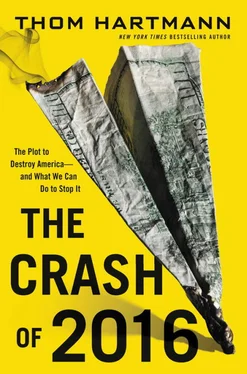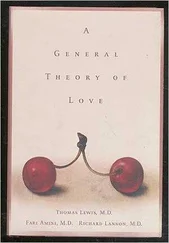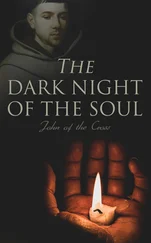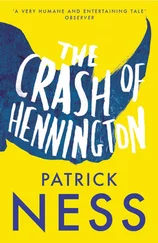When George W. Bush took office in 2001, the Economic Royalists would step up their assault. There would be no Leisure Society, only a cataclysmic crash.
I made a mistake in presuming that the self-interest of organizations, specifically banks and others, were such that they were best capable of protecting their own shareholders and their equity in the firms.
—Former Federal Reserve Chairman Alan Greenspan, October 2008
One of the great chroniclers of the last era when the Economic Royalists were in control was economist John Kenneth Galbraith, who was born in 1908 and watched it all unfold as a young man. In 1954, while he was a professor of economics at Harvard University, he wrote the international bestseller The Great Crash 1929 .
In it, he noted that the nine years of hot money (from low taxes on the rich) and minimal regulation had led to a hollowing out of the American economy, along with a massive transfer of wealth from the working class to the very rich.
He noted there was “little question” that in 1929 “the economy was fundamentally unsound.” There were, he said, five major weaknesses that “had an especially intimate bearing on the ensuing disaster.” 75
Galbraith listed them as being the following:
(1) The bad distribution of income
(2) The bad corporate structure
(3) The bad banking structure
(4) The dubious state of the foreign balance
(5) The poor state of economic intelligence
Most important, though, Galbraith noted that it was a lack of any sense of conscience or remorse—of responsibility—among the movers and shakers in the business and governmental worlds that caused the Great Crash. Our nation’s governance and industry had been taken over by people who had absolutely no commitment to the community of humankind, nor even to the community of our nation, nor to the neighborhoods in which they worked or ran their businesses.
Without using the word, which was then relatively obscure and ambiguous, Galbraith suggested we’d been taken over by psychopaths—people who were unable to understand the damage their actions were causing to the economy as a whole. Bluntly, he referred to it as “madness.”
Galbraith went on to describe the effects of this madness. “The sense of responsibility in the financial community for the community as a whole… is nearly nil. Perhaps this is inherent.
“In a community where the primary concern is making money, one of the necessary rules is to live and let live.”
Galbraith noted that when the mad—as in “insane”—people take over an economy, just the simple act of pointing it out is dangerous. The result is that the psychopaths—he refers to them as “the foolish”—are even further empowered and not only make off with more of our nation’s wealth but also hollow out our institutions of both governmental and corporate regulation in order to make their heist easier:
To speak out against madness may be to ruin those who have succumbed to it. So the wise in Wall Street are nearly always silent. The foolish thus have the field to themselves. None rebukes them.
Only in the wake of that Great Crash, Galbraith and most other economists note, did we figure out that our economy had been dangerously hollowed out by the twin combination of well-meaning ideologues and the psychopaths they empowered.
Could it be that there’s a subset of that eighty-year crash/war cycle that produces a corresponding rise and fall in the number of psychopaths who are running American business and government?
Darwin’s finches say yes.
Charles Darwin, in the 1830s, famously sailed aboard the exploration ship HMS Beagle to the Galápagos Islands, where he observed a broad variety of species of finches (among other things). Some finches, for example, were adapted to eating large, hard seeds and had correspondingly larger beaks. Some ate small seeds, and so had smaller beaks. Some ate seeds inside cacti and had longer and thinner beaks.
This variety of finches had all presumably evolved from one or two initial species that had been blown all the way to the Galápagos by a storm or carried in some other way. From this he developed his theory of how evolution produces speciation, and published it in his book The Origin of Species .
But Darwin didn’t have the time to visit and revisit the island where he’d found the finches, so he didn’t have an opportunity to see how his finches would change over time in response to changes in their environment. That job fell to Peter and Rosemary Grant, who spent decades annually visiting Darwin’s finches and watched extraordinary changes, chronicled in Peter Grant’s book Ecology and Evolution of Darwin’s Finches and later more widely popularized by Jonathan Weiner in his best-selling book The Beak of the Finch: A Story of Evolution in Our Time .
The Grants, in annual visits to Daphne Major, one of the Galápagos Islands, watched evolution—which Darwin had assumed worked slowly, over aeons—transform the finches of the island several times in response to severe environmental stresses.
The first time was in 1977, when a drought hit the island hard. This island was already a relatively barren and sparse environment, and the drought decimated the smaller and less hardy vegetation, browning the island and killing off the source of smaller seeds. The result was that the finches with smaller beaks, who couldn’t crack open the remaining larger seeds, died off.
In 1978, the offspring of the survivors of that drought had universally larger beaks—an environmental adaptation that took less than a year to happen.
It happened again—differently—during a two-year period of unusually rainy weather, 1984–85. All that moisture favored the smaller plants, which exploded across the island, and the finches with smaller beaks were able to eat those seeds without expending as much energy flying around carrying larger, heavier beaks like their relatives. And, sure enough, by 1986 small-beaked finch populations were back up to high levels.
Not only did evolution happen but it also cycled back and forth in response to a changing environment.
To the extent that economics can be described as an ecosystem—and the resemblances are many—it’s not hard to see how different economic environments are suited to different types of people.
In the wake of an economic crash, psychopaths would not be favored. Instead, the environment would be best adapted to people who are not perceived as risk takers, who have a high level of social commitment, and who are slow-and-steady builders of businesses. Classically, these were the CEOs and senior executives who followed business models that were prevalent in the half century following the Great Depression—CEOs who took only thirty times what their bottom-paid employee received, who typically had been more than twenty-five years with their own company before reaching the level of CEO, and who were not compensated in a way that was tied to stock prices.
During this period, CEOs were answerable to the workers (via labor unions), the company (via its board of directors), and the community (via local/state/federal government and community pressure). They were paid exclusively by salary and bonus—the tax code did not provide for compensating CEOs with stock or stock options. It was also during this period that some of the largest, strongest, and most resilient of American corporations were built.
Similarly, there were protections built into our business systems to allow for competition—particularly small, local competition—thus giving entrepreneurs an opportunity to step into the marketplace. If big corporations got too big, they were broken up, using the Sherman Antitrust Act of 1890 (among others).
Читать дальше












